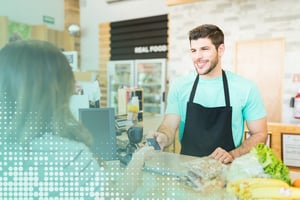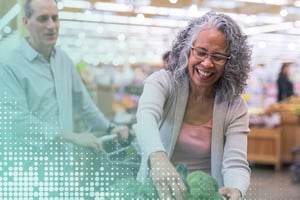Convenience stores have been upping their foodservice game over the last couple of years. In 2021, foodservice sales reached a record high of $43.2 billion in sales, and 20.5% increase from 2020.Convenience stores are evolving to stops for people to fuel not only their cars, but themselves too.
Grocery Delivery: Should You Worry?
Studies say that most people spend 53 hours a year at the grocery store. However, as technology has evolved and the consumer demand for more convenience has grown, more consumers are turning toward grocery delivery options. In fact, as of 2015 a quarter of global respondents were already ordering groceries online and having them delivered to their home. More consumers are embracing the e-commerce trends and looking forward to the growing number of options for leaving trips to brick-and-mortar businesses behind, leaving store owners in the grocery and c-store industries wondering what the future holds.
Growing Number of Options
Grocery delivery isn’t necessarily a new concept. Having milk and other staples delivered to the home was very common in the 1950s and 60s. However, e-commerce and mobile apps has sparked a strong revival in the grocery home delivery model in just a few years. Now, there are companies like Instacart and Shipt. that are dedicated completely to the grocery delivery service. These companies have their own apps that allow consumers to place their grocery orders for independently contracted drivers to pick up and deliver to their home. Through partnerships with stores like Meijer, Giant Eagle, and Publix, these services are offering same day delivery for a fee.
Making Convenience More Convenient
The growth and popularity of grocery delivery from large-format stores has led to some innovation in the options for delivery of items from nearby c-stores. In 2016, 7-Eleven piloted a partnership program with Flirtey to deliver items, including hot and cold foods, from local 7-Eleven stores directly to consumer homes via drones. Also, a startup called goPuff is continuing to spread their convenience store delivery service across the US. goPuff works much like the other grocery delivery apps and allows consumers to have more than 3,000 products, including alcohol in some markets, delivered to their door within 30 minutes or less.
There’s even a growing interest in having fuel delivered to the home. Companies like Purple and Mobile Fuelz Inc. have begun launching their gas delivery services in a number of U.S. cities and are seeing success thus far.
Going to New Heights
Technology developments in the grocery delivery space are allowing more than just grocery shopping via app and speedy car delivery. Today’s innovators are looking toward order and delivery options that seem to be right out of a futuristic sci-fi movie. For example, 7-Eleven and Amazon have already tested drone use and are planning to expand their operations. While drone use is still in its infancy, 67 percent of consumers like the idea of having drone delivery as an option.
Many consumers are still apprehensive about automated purchases based on predictive data from their personal behavior or habits. However, they are interested in automation that allows them to have some control over their experiences. While consumers continue building their trust in technology and the businesses using it, companies like Amazon are refining ecommerce technology that incorporates artificial intelligence and the Internet of Things to make consumer purchases easier.
An Encouraging Outlook
While delivery in the grocery and c-store industries is becoming increasingly popular, there are still challenges to be addressed and worked through. Initial concerns like product selection, quality, and urgency remain at the top of the priority list for those creating and operating delivery services. More difficult issues like pricing and order frequencies are proving to be larger barriers to adoption. Delivery fees, tips, and product markups can tack on an additional cost as high as $20 per delivery, which is a cost that not everyone is ready to take on regularly. For these reasons, grocery product delivery and click-and-collect options, will continue to grow while brick-and-mortar grocery and c-stores are still expected to dominate.
The rising prevalence of more convenient ecommerce-based options is no reason for store owners to panic. Instead, it’s an opportunity for business owners to start considering ways to enhance their service to their consumers. As a c-store owner and operator, taking advantage of this trend could be a great way to compete with the larger chains and impress your existing customers that might enjoy the added convenience.

![Webp.net-resizeimage-2[1]](https://blog.goebt.com/hubfs/Webp.net-resizeimage-2%5B1%5D.jpg)


